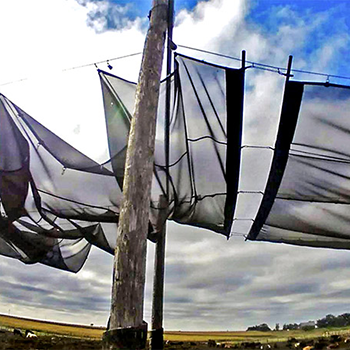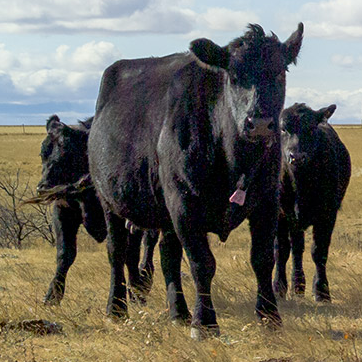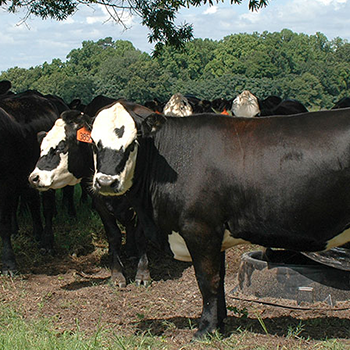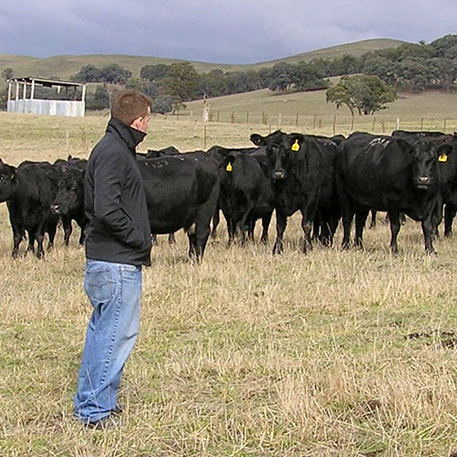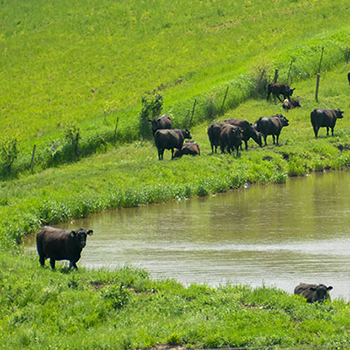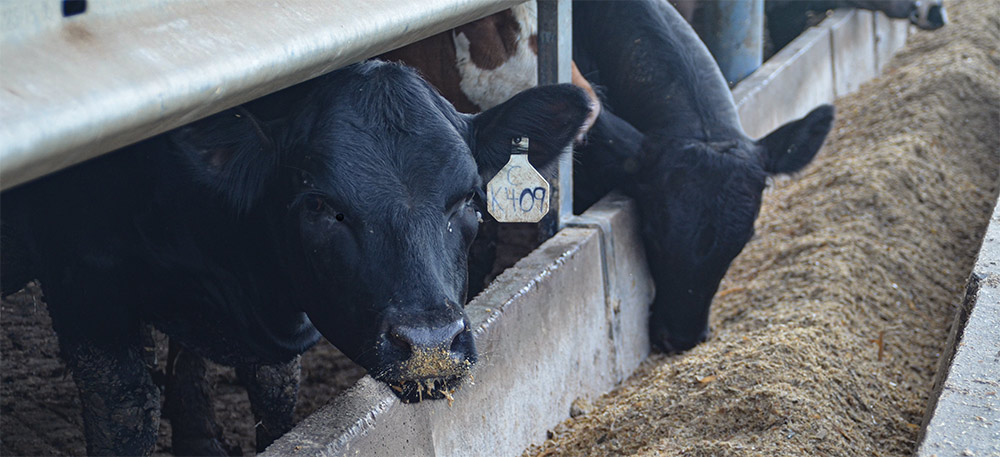
In The Cattle Markets
Changing grid premiums and discounts due to underlying changes in the fed-cattle industry.
In recent weeks there has been increased attention given to the role of Alternative Marketing Arrangements (AMAs) in the fed-cattle market. The use of these AMAs varies greatly by region, and some of the more common AMAs used include grid and formula pricing. AMAs pay producers premiums and discounts from a “base price” based on a combination of the yield grade, quality grade and weight of dressed cattle. It is common for the negotiated cash price to serve as the “base price” for AMAs using either the geographical region or the five-market average.
The decline in negotiated cash trade has varied by geographical region, causing some market participants to question if the “base price” truly reflects the local demand for cattle. For example, cattle formula-priced in Texas using the five-market average could, in certain weeks, be heavily weighted toward Nebraska and Iowa prices.
However, the current concern surrounding AMAs has more to do with lower cash prices received by producers due to market reactions to COVID-19 than the role of AMAs role in thinly traded markets. In an effort to effectively raise producer-received prices, market participants have introduced a series of price and supply control proposals. The U.S. Senate, led by Senator Chuck Grassley (R-IA) and Senator Jon Tester (D-MT), has proposed a law — commonly referred to as the “50-14” rule — that would mandate large-scale packers to procure a minimum of 50% of total cattle purchased in the cash market each week. The hope is that by increasing cash trade transactions it will solve issues with price discovery, effectively increasing negotiated cash prices.
Supply of fed cattle and demand for wholesale beef determine the price of fed cattle. In order to increase fed-cattle prices, the “50-14” rule would either need to reduce the supply of fed cattle or increase the demand for wholesale beef. While the rule would increase negotiated cash transactions, helping in price discovery in a given week, it is unlikely to affect the underlying fed-cattle market supply and demand conditions to effectively increase cash price levels.
Two other efforts to increase cash transactions in hopes of increasing cash prices include “bid-the-grid” through the Fed Cattle Exchange platform and the “set aside” program (similar to the one used in Canada). Many details lack and questions remain regarding the “bid-the-grid” process and potential efficacy in increasing regional cash trade. Its aim is to increase prices by having each producer negotiate the grid’s starting base price. While this may help in price discovery (i.e., arriving at a transaction price for a given quality and quantity of a product at a given time and place), this method once again falls short of fundamentally changing price determination.
The “set aside” program aims to control the number of cattle entering the market each week that can be processed. Producers would be paid a set amount per day to compensate for the cost of feeding. Who would be willing to pay for the program, as well as program start and end dates, are likewise uncertain. This may help reduce the backlog due to packing plant closures, as cattle will be processed quickly as soon as foodservice demand increases.
So what has been happening to cattle transactions (e.g., negotiated cash, forward contract, formula and negotiated grid) during COVID-19? Looking at all cattle in the United States, formula transactions have largely been replaced by negotiated grid. For example, in April formula trade was 74% of total weekly transactions and negotiated grid was 4%. In May formula trade fell to 48% and negotiated grid was 20%. The past few weeks the number of cattle sold on formula has steadily increased, while the number of cattle sold on the negotiated grid has decreased.
There has been little change in the negotiated cash and forward contract trade, on average for the United States, since Jan. 1, 2020. As in most cases, there were significant differences across geographical regions. Formula trade fell in the Texas-Oklahoma-New Mexico region, but not below five-year historical levels. This was offset by trade in the negotiated grid.
Formula-priced cattle fell from 95% of cattle priced in April to 30% in May. This was replaced entirely by negotiated-grid-priced cattle. In both the Texas-Oklahoma-New Mexico and Kansas regions, there was little movement in the negotiated price. Pricing in Nebraska has been somewhat more volatile. Negotiated cash fell to a historic low of 2% of transactions in May and entirely offset by increased formula trade. Negotiated grid and forward contract transactions were historically constant.
Since negotiated cattle can be sold either live or dressed, final cash payment is always determined by quantity (pounds of animal/carcass) times negotiated price. Formula- or grid-priced cattle rely upon a base price plus discounts or premiums for cattle quality or characteristics. Premiums for quality are paid for carcasses grading USDA Prime or Certified Angus Beef® (CAB®) brand or production practices such as “All Natural” or Non-Hormone Treated Cattle (NHTC).
Choice is the base quality grade, and discounts are applied to carcasses grading Select. Since Jan. 1, 2020, NHTC and “All Natural” premiums have remained constant, CAB premiums have increased, Prime premiums have decreased, and Select discounts have increased. The difference between Choice and Select, commonly referred to as the Choice-Select spread, is largely consistent with historical patterns of widening during the first quarter.
The deterioration in the premium for Prime and the sharp increase in CAB are abnormal. One reason for the deterioration in the premium for Prime product is likely due to the reduced demand for high-end steaks at restaurants from shelter-in-place orders accompanied by an increase in supply due to fed cattle being on feed longer as packing plants were closed.
Grids or formulas also require cattle carcasses to be within a given weight range, generally between 600 pounds (lb.) and 900 lb. on a dressed basis. Cattle that fall outside of these limits are discounted. Cattle slaughter weight has increased as packing plants closed, causing reduced packing capacity and cattle to be on feed longer than anticipated. For example, the dressed weight for steers and heifers has increased by about 10 lb. at a time when dressed weight historically decreases.
So how have weight discounts changed since January? Weight discounts were constant for all weights prior to Jan. 1, 2020. After that, the discount for cattle carcasses more than 1,050 lb. has decreased. In other words, packers discounted heavy carcasses less than in months and years prior.
All other weight discounts have remained unchanged. Seen in the light of historical discounts, this change in grid pricing for heavy cattle is unprecedented. For context, cattle are usually harvested between 1,200 lb. and 1,350 lb. on a live-weight basis. Given a 63% dressing percentage, cattle are weighing upward of 1,500 lb. Assuming an average daily gain (ADG) of 3 lb. per day, cattle harvested were on feed approximately 1.5 to 2 months longer. This would align well with the timing of COVID-19 cases in packing plants.
The underlying makeup of cattle transactions the market is seeing is likely more due to a change in the grid premiums and discounts than a fundamental shift in producer preference for the way cattle are transacted. As the grid premiums and discounts have changed, in some cases dramatically, more cattle have once again shifted away from negotiated grid towards formula.
As the United States comes out of the COVID-19 shelter-in-place restrictions, it is likely that the share of cattle transactions will normalize to historical levels. Fed-cattle cash prices are likely to increase as a result, due to an improvement in domestic retail and foodservice beef and export beef demand. Current proposals to increase the number of cattle transacted through a particular channel is unlikely to affect beef demand derived from consumers and passed along the supply chain down to producers or alter the current supply of fed cattle ready for harvest.
While their long-term implications are unknown, creating new transaction prices are unlikely to fundamentally change price determination, potentially causing increased costs and reducing profitability for the beef complex. Consistent with the economic theory of derived demand, the economic burden of these policies is likely to be largely carried by the cow-calf industry.
Editor’s note: Elliott Dennis is an assistant professor and extension economist in the Department of Agricultural Economics at the University of Nebraska–Lincoln. Photo by Kasey Brown.
